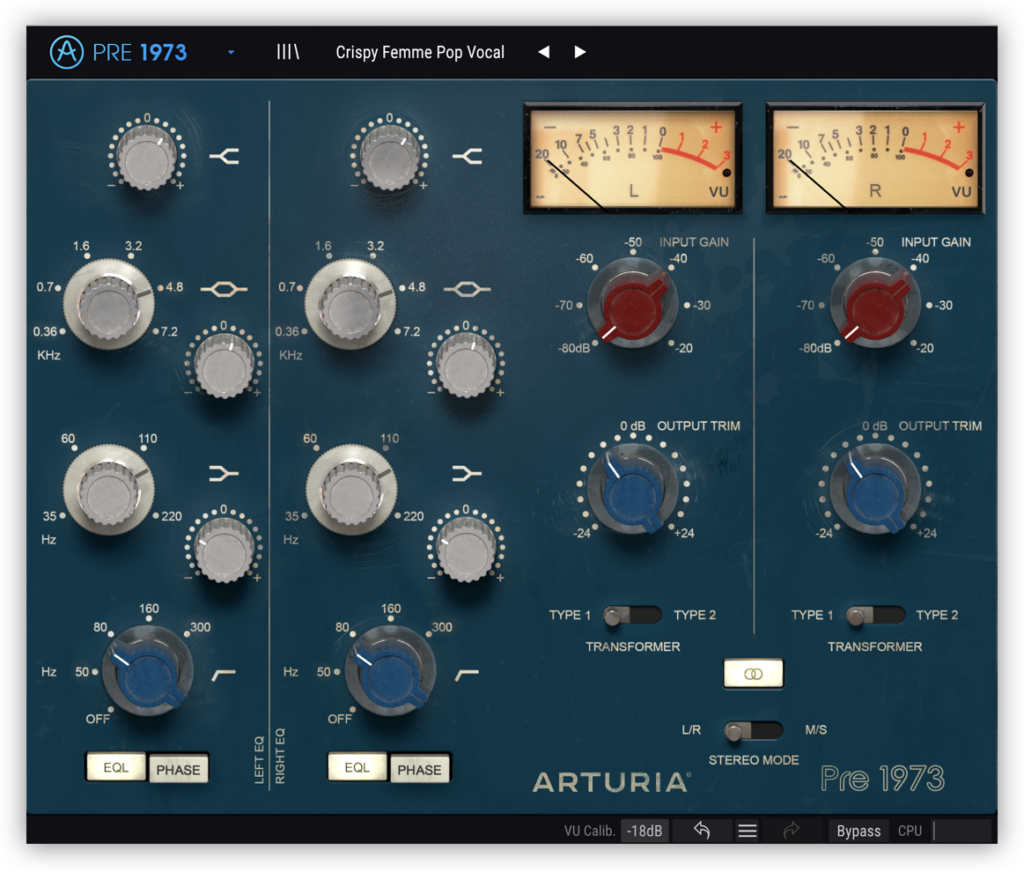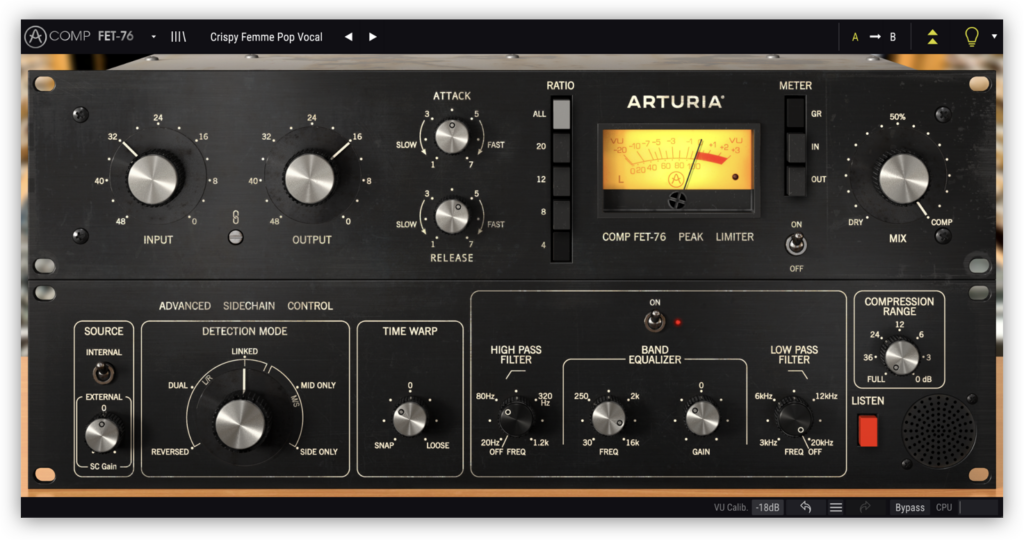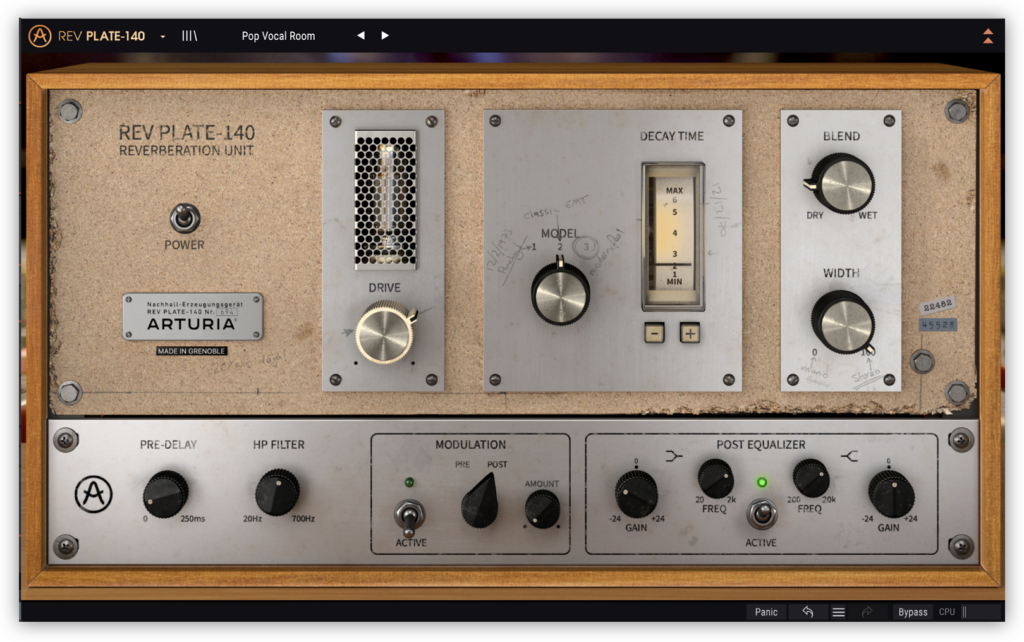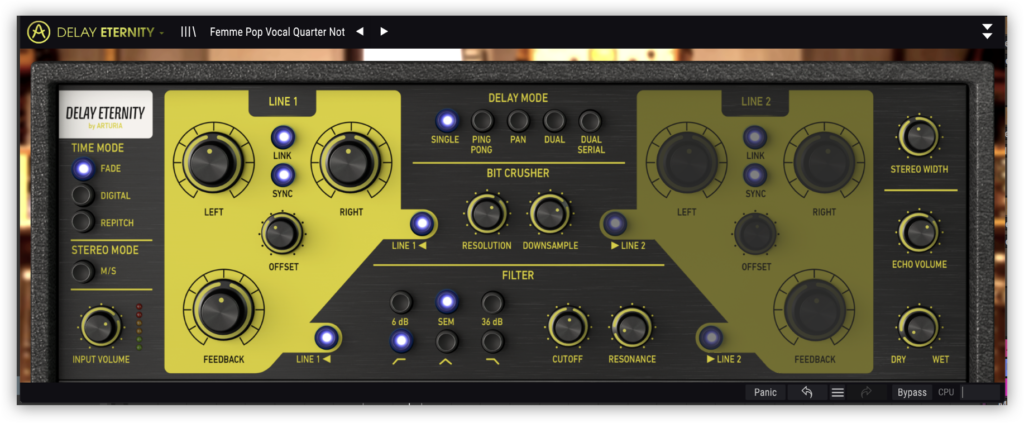A vocal chain is a string of processing modules that combine to make the raw audio from a microphone sound ‘better,’ perhaps more like the final audio you hear in a mixed piece of music.
Although there are no hard-and-fast rules about what must be included in a standard vocal chain, typically one would expect a standard chain to include a preamp, an EQ, compression, and some effects.
Historically, audio engineers needed to create their vocal chains using hardware, but for anyone recording vocals in the 21st century, this is fortunately no longer the case. For those who’d like to achieve the same quality but don’t have access to the gear, Arturia have faithfully emulated several classic processing modules in their FX Collection (and introduced a few original ones as well). Today, let’s take a look at how we can use their 1973-Pre, FET-76, and Plate-140 emulations, along with their original Delay ETERNITY, to form an adaptable and affordable vocal chain.
We’ll be using this vocal sample from Splice as an example:
The dry vocals we’ll be processing
1. Applying a preamp
The first step in our vocal chain is pre-amplification. A preamp takes an input signal and applies positive or negative gain to achieve the desired level of amplitude.
In this case, our vocals have already been recorded through a preamp, so there’s no need to apply more gain, but if you’re using your interface’s onboard pre (in other words, if you’re plugging a mic directly into your interface), you might try applying gain using an emulation like Arturia’s 1973-Pre instead.

Our preamp settings
For this patch, we’ll primarily rely on some of the EQ features of the 1973-Pre. A gentle high pass along with some shelving will suffice to get our vocal ready for the next stage, as the high-frequency bite adds a bit of pop flavor.
Here’s how our vocal sounds after the 1973-Pre:
The vocals after the 1973-Pre
2. Applying compression
Next, we’ll use Arturia’s FET-76 emulation to apply some compression. Performing a moderate squeeze to the signal, this step in the chain will even out our vocal’s peaks, which will make it feel more full and powerful.

Our compression settings
Additionally, we’ve taken care of sibilance using the advanced sidechain controls. We scooped the signal used for detection somewhere between 5 – 10 kHz to control sibilant consonants, pairing this processing with a gentle high pass at 80 Hz.
Here’s how our vocal sounds after the FET-76:
The vocals after the FET-76
3. Applying reverb
Now that we’ve dialed in our dynamics processing, let’s give the vocals a sense of space. When we listen to someone speaking or singing in person, we almost always hear more than just the sound emanating from their mouth; we hear the various reflections of that sound added to it, which vary based on the physical characteristics of the space we’re in. By adding reverb, we’ll simulate a ‘room,’ which should help make our artificially dry vocal come to life.

Our reverb settings
This patch makes use of Arturia’s classic EMT plate model. A low decay time value means the simulated room feels ‘smaller’ to match the low pre-delay value, despite the full stereo width. We also apply a final touch of character with some tube amp drive.
Here’s how our vocal sounds after the Plate-140:
The vocals after the Plate-140
4. Applying delay
A little bit of delay can go a long way in adding that final polish to vocals. Using Arturia’s Delay ETERNITY, we’re going to create a simple quarter-note delay, with no fancy ping-pong or dynamic panning.

Our delay settings
Eagle-eyed readers will notice a significant amount of feedback in this patch. We’ll apply a bitcrush effect to the feedback, crushing the signal to a resolution of 8 bits. You might find this effect a bit aggressive, but give it a shot; you may find that the extra distortion introduced by the bitcrusher can help the delay effect cut through a mix and sound ‘present’ and ‘airy.’
Finally, we’ll run the feedback signal through a high pass filter and push up the cutoff to around 1 kHz. This filter will help us avoid low-frequency rumble and ensure that the echo doesn’t run into the dry vocal signal, especially around the 200 – 500 Hz range where the voice’s fullness resides.
The vocals after the Delay ETERNITY
This vocal chain is fairly versatile, but even so, it’ll sound best when adjusted to suit your vocalist and the mix that their performance is situated in (always be sure to ultimately make decisions based on how the vocals sound in the context of the entire track, rather than in isolation). Feel free to download all the presets here and tweak them for a quick and effective vocal chain.
Do you have any questions on creating your own vocal chain? Let us know in the comments below, and also check out our Skills lesson with Kenny Beats for another in-depth vibe into approaching vocal chains.
Try Arturia’s FX Collection for free, and then Rent-to-Own the plugin for $19.99/mo until you own it outright:
May 27, 2020


